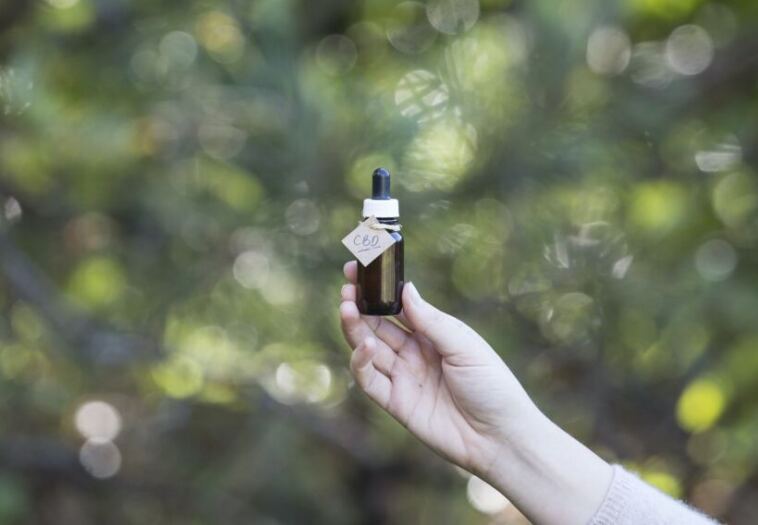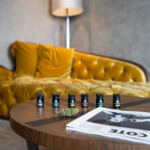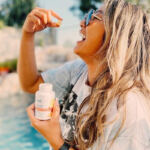- Like
- SHARE
- Digg
- Del
- Tumblr
- VKontakte
- Flattr
- Buffer
- Love This
- Save
- Odnoklassniki
- Meneame
- Blogger
- Amazon
- Yahoo Mail
- Gmail
- AOL
- Newsvine
- HackerNews
- Evernote
- MySpace
- Mail.ru
- Viadeo
- Line
- Comments
- Yummly
- SMS
- Viber
- Telegram
- JOIN
- Skype
- Facebook Messenger
- Kakao
- LiveJournal
- Yammer
- Edgar
- Fintel
- Mix
- Instapaper
- Copy Link
Introduction
Cannabidiol (CBD), a non-psychoactive compound derived from the cannabis plant, has gained immense popularity for its potential therapeutic benefits. CBD products, from anxiety relief to pain management, are now available in various forms, including oils, edibles, creams, and tinctures.
However, one critical factor that consumers need to understand is the actual percentage of CBD in these products. Knowing the real percent of CBD ensures you get the correct dose required to achieve the desired effects.
This article delves into why knowing the accurate CBD content is essential, how to interpret it, and what to look for when purchasing CBD products to ensure you make informed and effective choices.
Additionally, understanding the actual percentage of CBD helps you compare different products and brands, enabling you to choose those that offer the best value and efficacy.
It also aids in identifying any potential discrepancies in labeling, further protecting you from misleading claims and ensuring you get the therapeutic benefits you seek.
Why the Real Percentage of CBD Matters
- Effectiveness and Dosage
The effectiveness of a CBD product largely depends on its concentration. A higher percentage of CBD often means a more potent product, requiring a smaller dose to achieve the desired effects. A lower percentage might necessitate a higher dose, which can affect the treatment’s cost and efficacy.
- Quality Assurance
Knowing the CBD content helps ensure you’re getting what you pay for. Misleading labels can deceive consumers into thinking they’re using higher-quality products when, in fact, they’re not getting the expected amount of CBD.
- Health and Safety
Accurate labeling is crucial for safety reasons. Inaccurate dosages can lead to ineffective treatment or, in some cases, adverse effects. This is especially important for individuals using CBD to manage chronic conditions or other health issues.
How to Identify the Real Percentage of CBD
- Lab Reports and Certificates of Analysis (COA)
Reputable CBD brands provide Certificates of Analysis (COA) from third-party labs. These reports are crucial for verifying t and content, along with the presence of other cannabinoids, terpenes, and potential contaminants.
-
- Reading a COA: Look for the total CBD content per serving and the percentage of CBD in the product. Ensure the product is free from pesticides, heavy metals, and other harmful substances.
- Product Labels
While COAs are the gold standard, product labels also provide essential information. Here’s what to look for:
-
- Milligrams of CBD: This indicates the total amount of CBD in the product or per dose. For example, a 30ml bottle of CBD oil might list “600mg CBD,” meaning the whole contains 600mg of CBD.
- CBD Percentage: Some labels provide the concentration as a percentage, such as “5% CBD.” This means that 5% of the product’s total volume is CBD.
- Brand Transparency
Choose brands openly disclosing their CBD sourcing, extraction methods, and lab testing procedures. Transparency is often an indicator of product quality and brand reliability.
What to Look For When Buying CBD Products
- Full-Spectrum vs. Isolate
-
- Full-Spectrum CBD: Contains all cannabinoids, terpenes, and flavonoids from the cannabis plant, not just CBD. This can enhance the therapeutic effects due to the “entourage effect.”
- CBD Isolate: Pure CBD with no other cannabinoids or terpenes. Ideal for those who want to avoid THC.
- Ingredients and Carrier Oils
Check the additional ingredients in the product. Carrier oils like MCT, hemp seed, or olive oil can affect absorption rates and taste.
- Dosage Instructions
Reliable products provide clear dosage instructions, helping you administer the correct amount to achieve desired effects without wasting the product.
- User Reviews and Brand Reputation
Research user reviews and testimonials to gauge the product’s effectiveness and the brand’s reputation. High customer satisfaction often correlates with product quality.
Common Pitfalls and How to Avoid Them
- Overinflated Claims
Be wary of products that make bold, unveriCBD’s benefits. The bene, fits it is of CBD are vast but not a cure-all.
- Inconsistent Labeling
Fluctuations in labeling can indicate poor quality control. Stick to trusted brands with consistent and transparent labeling practices.
- Price vs. Quality
A higher price doesn’t always mean better quality. Compare prices relative to CBD concentration and overall product quality.
The Takeaway
Understanding the actual percentage of CBD in products is crucial for ensuring you receive the full benefits and value of your purchase.
By carefully examining lab reports, reading labels thoroughly, and selecting reputable brands, you can make informed decisions and maximize the therapeutic potential of CBD.
Always prioritize transparency, quality assurance, and accurate dosing to experience what CBD has to offer fully.


